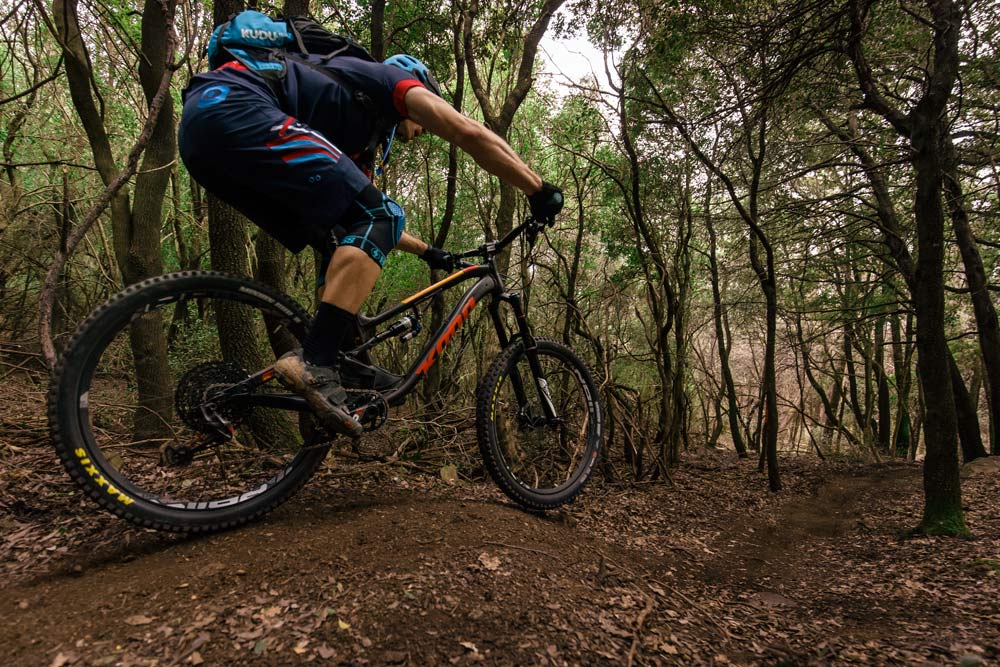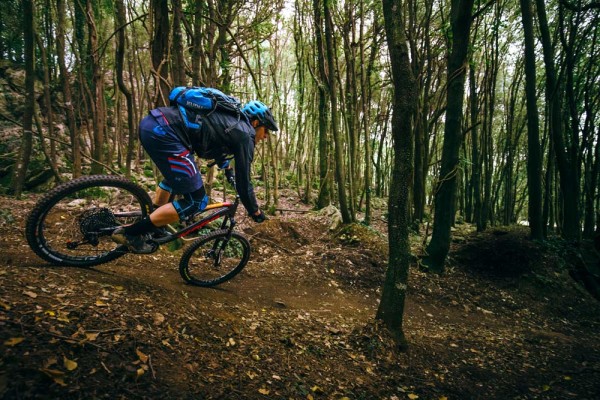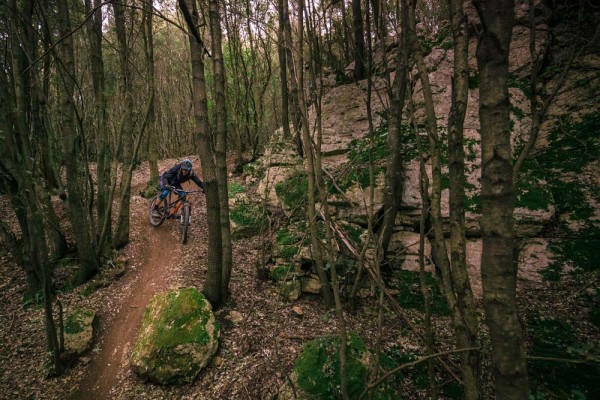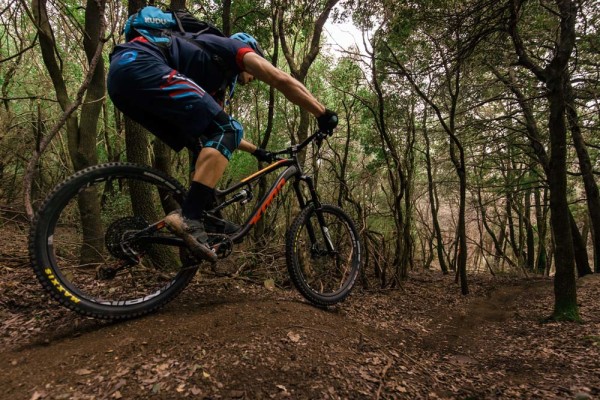At the launch for the all-new SRAM Eagle 1×12 mountain bike groups, we had two full days of organized rides. The first was an XC loop aboard a Scott Spark equipped with the XX1 Eagle group. Day two was the “enduro” loop aboard a Kona Process 153 with X01 Eagle. Each day had several hours of riding, both with plenty of climbing, especially day two as we essentially ran different downhill enduro trails that mostly started from the same point…which we had to climb back to between each run.
Then, as a bonus, I stuck around to race, er, participate in round one of the Italian Super Enduro series, so I joined the SRAM folks for a pre-race day of shuttling a couple of the runs before the all-day, six-stage enduro running through the town of (and mountains surrounding) Massa Marittima, Italy. Those four days provided plenty of opportunity for things to skip, jump, drop or otherwise malfunction, but everything worked perfectly. And the massive range and low, low gearing of a 50-tooth cog x 32-tooth chainring was just what I needed on long, steep fire roads and singletrack sections by day four…
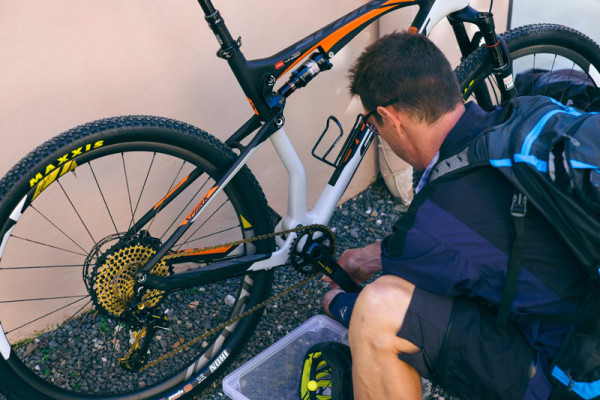
The technical details of the group were covered here, and actual weights and specs here. So this is all about the ride.
SRAM’s development story for Eagle is impressive, with virtually all of the moving parts being refined and improved even if some, like the cranks and derailleur, look very similar to past products. That effort shows through with the group’s performance. It’s quiet, smooth, shifts perfectly and really does obviate any need for a front derailleur.
Over the four days of riding, the only issue I saw on anyone’s bike was a broken shifter, and that’s from getting hit (or kicked – jury’s still out) during a wipeout. Other than that, it was smooth sailing over the rock gardens, rock drops, roots and other challenging terrain.
On the climbs, it would shift to an easier gear under load without protest, even up to the 50. The cadence jump from 42 to 50 wasn’t as bad as I thought it might be, and by the time you need a 50, you’re likely at a point where curated cadence steps are gladly traded for easier pedaling.
If I needed anything easier than the 50-tooth, I was better off dismounting and walking. Yes, that giant cog provided plenty of wheel spinning torque if I wasn’t careful on the loose, pebbly fire roads. But balancing my weight carefully kept it moving forward, and it’s a non issue when there’s good traction. Equally important is how smoothly and quietly the chain shifted all the way up into it. There was no hesitation in either direction or at either end of the cassette. Nor did I notice any chain snarl when backpedaling anywhere on the cassette.
The flip side is the top end. I honestly don’t know if I got into the 10-tooth the entire trip, but having raced the Trans-Sylvania Epic and running out of gearing on the fire road descents, I know there are instances where that entire 10-50 spread would be used. During the TSE, I was testing the then-new XX1 group’s 10-42 and had dropped down to a 30-tooth chainring to make the hours of climbing bearable. But that compromised my top speed on the timed downhill sections. With Eagle, I think those compromises would be erased.
On the 27.5” bikes (like the Kona I rode, or the Lapierre shown here), the oversized derailleur pulley did make it seem like the arm was hanging lower than before, but SRAM says it’s an optical illusion and that it’s about the same as only slightly longer than regular XX1 and slightly shorter than a competitor’s 2×11 derailleur cage. Maybe a hair lower, but not so low that it’s any more likely to get caught up on roots or rocks. That’s one of the reasons for the larger lower pulley wheel, to add a bit more chain without needing to make the cage longer.
If you’re riding SRAM trigger’s now, these feel the same. Functionally, both the XX1 and X01 groups are identical. And there’s only minimal weight difference. For my money, I’d go with the X01 and make up the weight savings elsewhere. Although, that gold is pretty sexy… Either way, this is the group I now want on my all-mountain bike. For my local XC trails, the original XX1 is fine. But for the big rides in Pisgah and beyond, Eagle is it. Four days is a good test, but we’re looking forward to putting lots of miles on group on home turf. If it holds up as well as their 11-speed groups have, it’ll become the new reference point. Not just for range, but for total drivetrain system performance.
